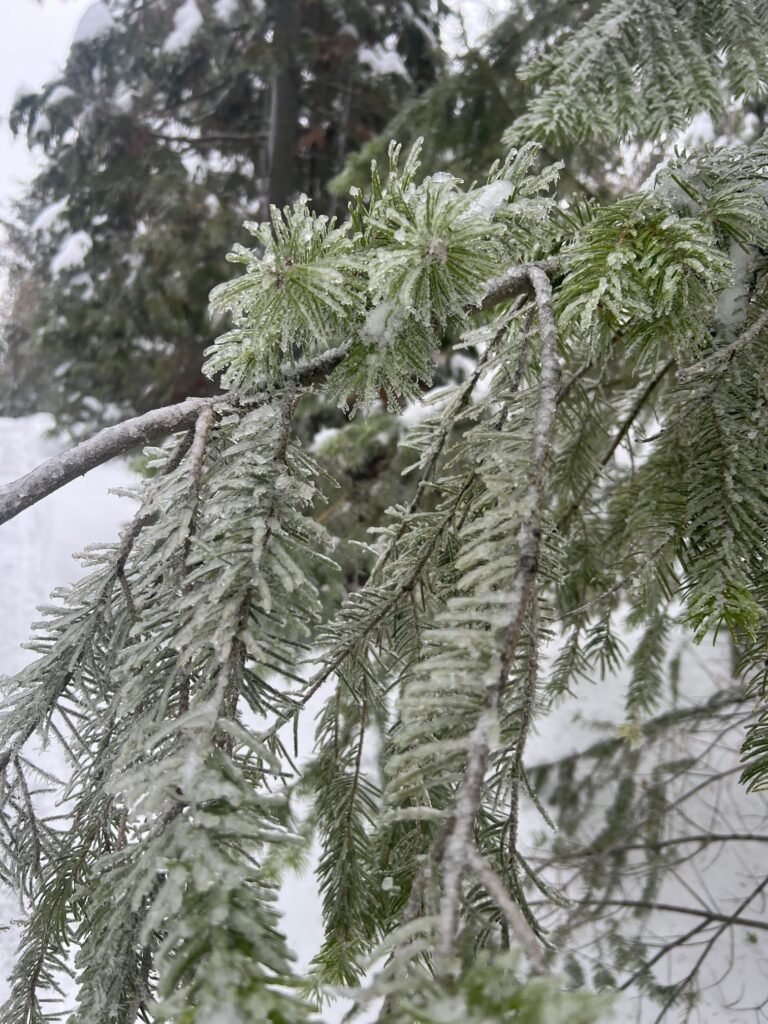
Tree Damage From Ice Storm: How Can You Treat It?
Freezing rain that creates a thick layer of ice surfaces can lead to all kinds of problems. From leading to power outages and creating hazardous driving conditions all the way to causing damage to trees. The ice storms that we have seen sweeping through Western Washington this year can be very damaging to trees. When ice forms on a tree, it can become very heavy and weigh down the tree branches. This can cause the tree branch to break off. After an ice storm, taking the steps to care for these damaged trees can improve their short and long-term chance of survival.
How to help your trees after an ice storm
After there has been an ice storm, it’s a good idea to assess the trees around your property, especially those near your home or driveway that could be hazardous to people or damage your house or cars. When looking for damage to your tree, it’s very important that you stay far enough away so that a potentially broken branch that is being held in the tree by snow, ice, and other branches does not fall and injure you.
When safely assessing your trees for ice damage, there are a few things you can look for:
- A leaning tree
- A broken or hanging branch
- Branches that are bending due to the weight of snow and ice
- Broken bark
- Stobs
If you believe that your tree has suffered damage from an ice storm, you should have a professional arborist come to your property and create a plan that will mitigate tree stress and give your tree the best chance at long-term survival. Having your tree cared for after an ice storm can be essential for its health and also your safety, as branches weakened from the weight of snow and ice can fall.
Which trees are more susceptible to damage from ice storms?
Ice storms cause damage to trees by creating a build-up of ice on branches. Thus, trees that have more surface area for the ice to build up are more likely to experience the damage of ice weighing on their branches. Trees with broad crowns tend to have lateral branches that extend far out. This means that there is more surface area for ice to accumulate which can lead to branch breakage due to the weight. Although Evergreen trees do not have broad crowns, they do have dense crowns which hold snow and ice. These branches can bend with the weight, but when conditions are severe enough it can cause branch breakage.
There are many reasons that it’s important for the structure of a tree to be balanced. In the instance of heavy snow and ice buildup, it’s especially critical. Trees that are unbalanced in these conditions are more likely to experience damage from an ice storm. This is because when there is a significant difference in the number of branches on one side of the tree compared to the other, the tree will begin to lean with the weight of the ice in whichever direction has more surface area for ice buildup.
Trees become much more susceptible to damage from any conditions, especially ice storms when they are already under stress. When branches are weakened or dead going into an ice storm, there is a much higher probability that they will break off from the effects of the ice and snow.
How can you prevent tree damage from ice storms in the future?
Trees can become stressed for many reasons. Deadwood, broken bark, pest infestation, and disease, to name a few. Regular tree care can help create the optimal environment and structure of the tree so that the likelihood of your tree experiencing stress is reduced. Having regular pruning done to ensure that your trees are well taken care of and at their strongest going into the winter will give them a fighting chance against extreme weather and ice conditions. When your trees are in good health, the effects of ice damage can be less severe.
Having proper crown thinning done regularly can significantly improve your tree branches’ chance of withstanding ice storms. When you hire a professional tree service company to do crown thinning, they strategically remove small branches so that the foliage is reduced and there is less area for ice buildup, while leaving the main, strong branches.
If your trees seem to have experienced damage from an ice storm, or you would like to take preventative steps to give your tree its best chance of survival during extreme weather conditions such as ice storms, schedule a no-cost consultation online or with one of our field representatives to have one of our local, professional arborists consult with you.
